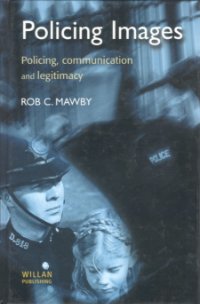By William Webster, Diana Miranda, and Charles Leleux
This report provides research findings from a rapid research project reviewing the use of Body-Worn Video (BWV) cameras in a policing context, with specific reference to police-citizen interactions and scrutiny mechanisms. The research was conducted in November and December 2021, using a methodology consisting of a literature review and a sequence of semi-structured interview with BWV experts. The research was undertaken with a view to providing advice and guidance to Police Scotland for the potential widespread future roll-out of BWV in Scotland. It is evident, from the research reviewed here, that BWV is being deployed internationally by law enforcement agencies and other public service providers. Typically, BWV is recognised to provide evidence of incidents, provide a level of personal protection and increased transparency in policing. The rationale for the use of BWV in policing is well established and is afforded a good level of public support. It is also evident, that across UK police forces there is differentiated use of the technology and associated governance mechanisms. In this respect, Police Scotland is in an advantageous position in that it can learn from what is perceived to be ‘best practice’ elsewhere in the UK and beyond. It is apparent that across the UK there are novel emergent mechanisms used to govern BWV in relation to scrutiny and accountability. These include dedicated Scrutiny Panels and practices referred to as random ‘dip sampling’, as well as dedicated codes of practice and use protocols. Here, it is suggested that Police Scotland review what other police forces are doing in this area and design processes that are compatible with Police Scotland’s institutional arrangements. The research presented here also suggests that BWV use protocols and data management procedures are established prior to the widespread deployment of the technology. One aspect in which published literature was lacking was in relation to the impacts of BWV on minority groups and ethnic minorities. Here, the evidence is mixed with some authors claiming BWV strained community relations, whilst others claimed BWV made police interactions more transparent. This points to both, a need for further research, plus the use of caution in the use of BWV in certain situations. It is also noted, that whilst there is a general level of public support for BWV, this relates primarily to basic BWV camera units and that this level of support cannot be assumed from more sophisticated data processes, such as those associated with face recognition and live streaming technologies. Here, it is recommended that Police Scotland implement mechanisms that ensure a degree of oversight and accountability in how BWV cameras are used. This can ensure legitimacy of use and facilitate public confidence in the use of the technology.
Edinburgh: Scottish Institute for Policing Research, 2022. 74p.





















